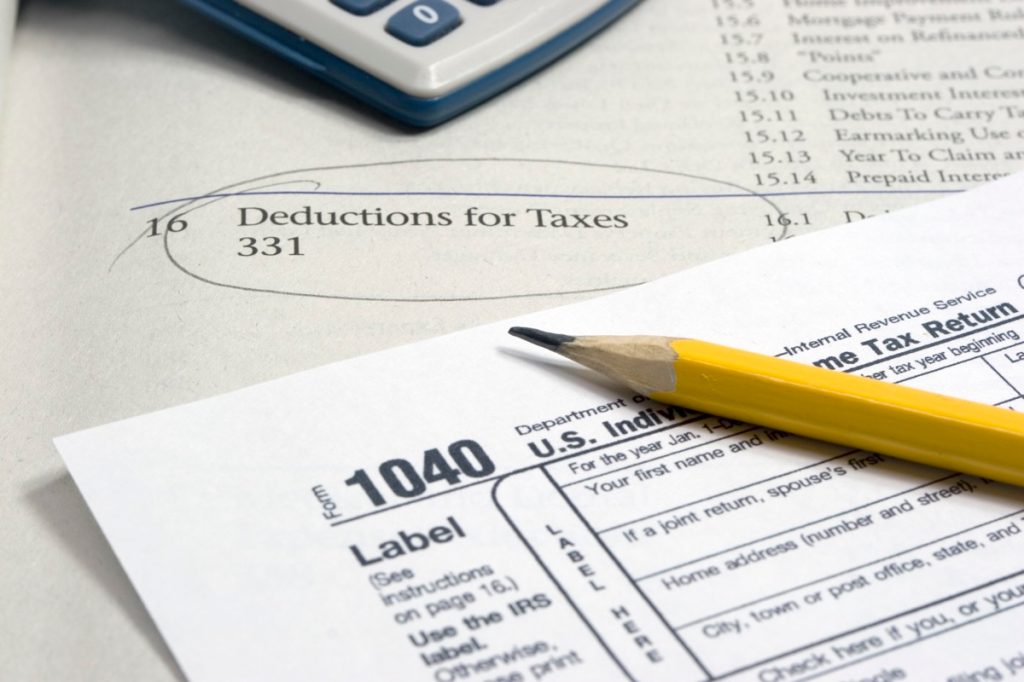IRS Just Raised Standard Deductions—Will You Be Affected?

If there’s anything you can count on with the Internal Revenue Service (IRS), it’s that you’ll have to pay your taxes each and every year. But despite this consistency, the agency might still make some changes from time to time that can affect the way you file—and can even change how much you owe. And now, the IRS has announced that it raised standard deductions for this year’s filing. Read on to see if you’ll be affected by the change and what it could mean for you.
RELATED: IRS Issues New Alert on What You Must Do Before the Year Is Over.
The standard deduction can work differently depending on your situation.

How to file taxes can vary pretty significantly from person to person, based on their work, family, and other life situations. This includes deductions, which taxpayers can claim for things like charitable contributions, a home office space, or home mortgage interest to bring down the amount they owe in any given year if they qualify.
But while some opt for the line item deductions, the IRS also offers a standard deduction. This is an amount set by the tax agency that you can take off your adjusted gross income, which will decrease what you owe in a filing, according to personal finance website NerdWallet. This blanket amount can remove the extra work and documents needed for itemized deductions.
While the amount is uniform, it still changes based on a few conditions. Those who are 65 or older can often receive a higher standard deduction, as well as those who are blind. But anyone who can be claimed as a dependent on another person’s filings will see a lower amount, according to the IRS.
Opting for the standard deduction also limits you from making any other itemized deductions in your filing. And some demographics are excluded from taking them, including couples who file jointly where one member decides to itemize deductions or anyone filing on behalf of a trust, partnership, or estate.
RELATED: If You Already Did Your Taxes, You May Need to File an Amended Return, IRS Warns.
The IRS just raised standard deductions for this year’s filing.

While eligibility for the standard deduction may change over time for some people, the amount taxpayers can claim also changes based on an annual IRS decision.
“Every year in September, the Bureau of Labor Statistics produces the August consumer price index,” Anthony Burke, an IRS spokesman, said during an interview, WTOP reports. “The IRS takes those figures and applies them to about 60 tax items that have to be, by law, adjusted for inflation. And so, it moves up various rates, various things change, and most of these are beneficial for taxpayers because it has to keep track with inflation to keep things fair.”
And this year is no different. On Oct. 18, the IRS announced it’s increased the standard deduction amounts for 2023, meaning you could take more off when you file next April if you qualify.
Married couples filing jointly can take off $27,700, an increase of $1,800 from the previous year, according to the IRS. Single taxpayers and married couples filing individually will see a $900 increase from last year to $13,850. And those filing as the head of a household can now take $20,800, which is an increase of $1,400 from 2022.
RELATED: 4 Warnings About Using TurboTax, According to Experts.
The amount will go up again for next year’s filing, too.

And the changes don’t stop after this year. The standard deduction will go up once again for the 2024 tax year, according to a news release from the IRS on Nov. 9.
For filings due in April 2025, standard deductions for married couples filing jointly will go up $1,500 to $29,200. Single taxpayers and married people filing separately from their spouses will see their amount rise $750 to $14,6000. And those filing as a head of a household will see a $1,100 increase for a standard deduction of $21,900.
RELATED: 5 Reasons the IRS Might Mistakenly Audit You, Finance Experts Say.
The IRS also recently announced changes to tax brackets for this season.

Along with upping standard deduction amounts, the IRS also recently announced another significant change for the 2023 tax year by revising tax brackets. This means that the agency has moved the set boundaries for income levels on which tax rate they qualify for, once again due to inflation. The overall changes pushed the upper limits seven percent higher than in the 2022 tax year, Forbes reported.
The update could mean some people will pay a different rate this year before deductions. The lowest tax bracket begins at 10 percent for individuals with $11,000 or less in taxable income or $22,000 for married couples filing jointly. It then progressively increases from 12 percent for individuals making between $11,001 and $44,725, 22 percent for those with $44,726 to $95,375 in taxable income, and 24 percent for taxpayers earning between $95,376 to $182,100.
Individuals with an income between $182,101 and $231,250 now have a rate of 32 percent, while people earning between $231,251 and $578,125 fall into a 35 percent rate. It tops out with those who take in $578,126 or more in 2023, paying 37 percent. The complete list of updated brackets and rates—including those for married couples filing jointly or separately—can be found on the agency’s website.
RELATED: For more up-to-date information, sign up for our daily newsletter.